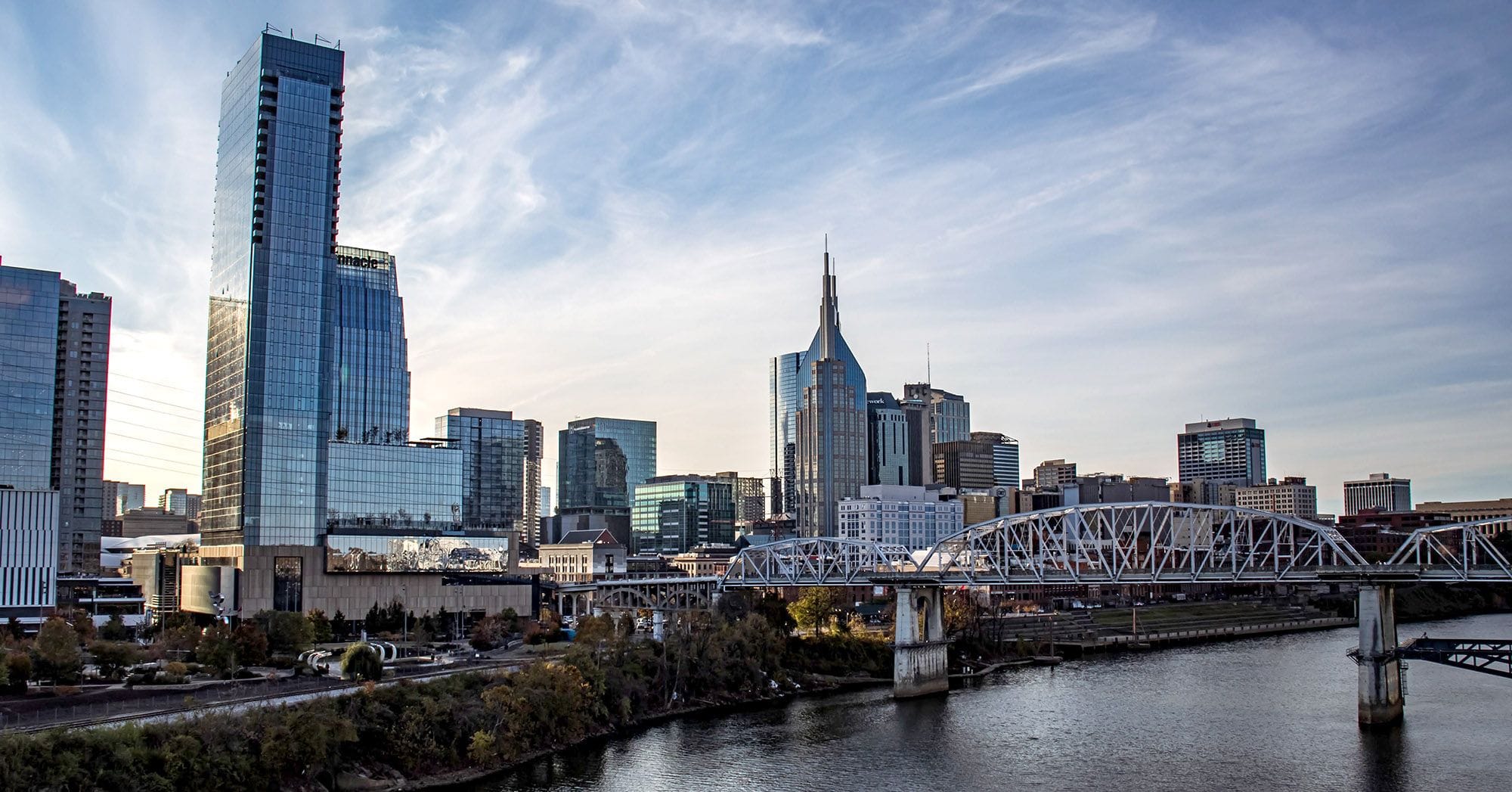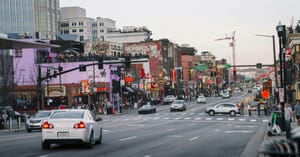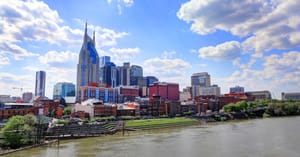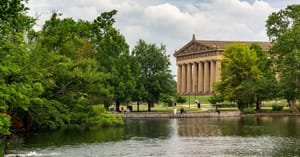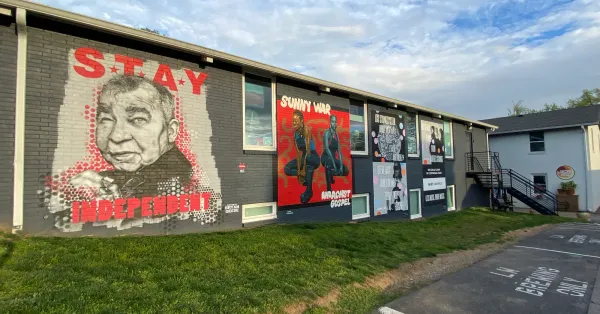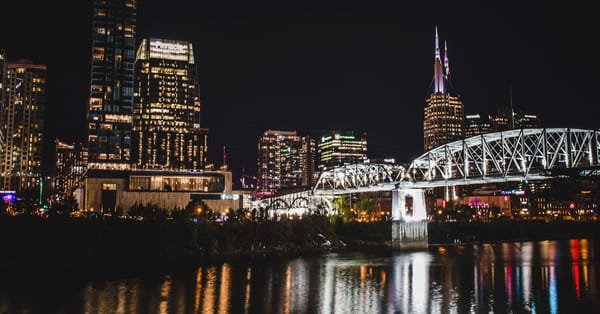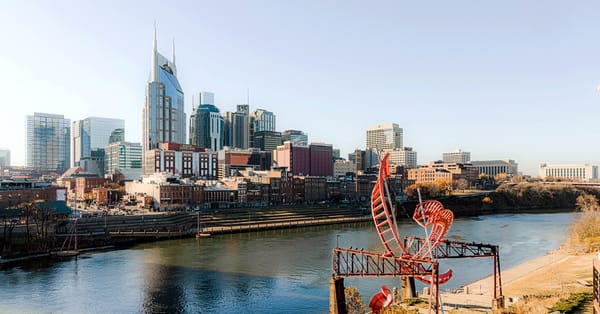People are flocking to Nashville in hordes and for a good reason — it’s easily one of the most exciting and fascinating places in the country.
Whether you’re debating about relocating to Nashville, just stopping by for a visit, or you’re simply curious about the history, geography, and cultural landscapes of the Music City, we’ve got you covered with over 50 of the most interesting facts about Nashville.
Table Of Contents
- Nashville Quick Facts
- Nashville History Facts
- Nashville Geographic Facts
- Nashville Weather Facts
- Nashville Country Music Facts
- Nashville Random/Weird Facts
Nashville Quick Facts
| Founded | 1779 |
| Metro Population | 2,046,828 |
| Size by Area | 525.94 sq mi |
| County | Davidson |
| Mayor | John Cooper |
| Nicknames | Music City, Athens of The South, Powder City, Protestant Vatican |
| Average Rent | $1787[1] |
| Average Home Price | $448,000[2] |
| Average Yearly Rainfall | 47 Inches[3] |
| Average Yearly Snowfall | 4.2 Inches[4] |
| Average Sunny Days | 207[5] |
| Sports Teams | Titans, Predators, Sounds |
| Named After | Francis Nash |
| Known For | The Grand Ole Opry, Nashville Hot Chicken, Maxwell House Coffee, Taylor Swift, Capitol of Tennesee |
Nashville History Facts
1. The area of land we know today as Tennessee was first inhabited by several Indigenous peoples. These were the Muscogee, Yuchi, Chickasaw, Choctaw, Cherokee, Shawnee, and Seneca peoples[6].
2. The first non-Indigenous peoples of the Nashville area were several groups of French Fur Trappers who founded a trading post in what is now the downtown area of Nashville, in 1689, however, this trading post was eventually abandoned a few decades later[7].
3. Most historians agree that the founding of Nashville began on Christmas Day 1779 following the designation of Fort Nashborough at the former site of the French Trading Post by James Robertson and John Donelson[7].
4. The Battle of Nashville, a major turning point in the American Civil War, took place on December 15, 1864[7].
5. Though much of the South struggled economically through Reconstruction, Nashville saw a decent amount of growth through this period due to the city’s placement near the Cumberland River, the existence of railroad infrastructure, and several business developments, one of which was Maxwell House Coffee. Famously, upon trying the coffee, President Theodore Roosevelt remarked that it was “good to the last drop”. The endorsement became the company's tagline for over a hundred years and is still used today[7].
6. Many other well-known companies also started in or relocated to Nashville including Lays Potato Chips, Goo Goo Cluster, Gibson Guitars, and Dollar General.
7. In 1919, The Great Fire of Nashville destroyed 650 buildings and displaced 2,500 people[8].
8. The Grand Ole Opry was established in 1925, establishing Nashville as a major hub for country musicians all over the country. Soon, recording studios began setting up shop in Nashville's vibrant downtown area to record artists across genres rebranding Nashville as Music City[7].
9. During WWII, Nashville manufactured several important pieces of equipment for the US military abroad. This included combat boots manufactured by Genesco, parachutes developed by DuPont, and minesweepers developed by the Nashville Bridge Company[7].
10. Two American presidents made their homes in Nashville, James K. Polk and Andrew Jackson. You can find both men buried right here in Nashville. The home of Andrew Jackson, The Hermitage, is located in Nashville and serves as a historical landmark, museum, and winery.
Nashville Geographic Facts
11. Nashville, Tennessee, is located near the Cumberland River, which is the most prominent river in the region. The Cumberland River flows through the heart of the city, providing scenic views and recreational opportunities for residents and visitors alike. In addition to the Cumberland River, Nashville is also in proximity to other smaller rivers and waterways, such as the Harpeth River and the Stones River, both of which are popular destinations for outdoor activities and water sports[9].
12. The Cumberland River is approximately 688 miles long[9].
13. It originates in Harlan County, Kentucky, and flows through several states, including Kentucky and Tennessee, before eventually emptying into the Ohio River near Paducah, Kentucky[9].
14. Typically, the depth of the Cumberland River can range from shallow areas with depths of a few feet to deeper sections with depths of up to 50 feet or more. At certain points, the river may be deeper due to dam operations, creating reservoirs with deeper water levels[9].
15. Nashville is surrounded by several lakes, including Center Hill Lake and Percy Priest Lake to the east, Old Hickory Lake to the north, Cheatham Lake to the northwest, Radnor Lake to the south, and Cordell Hull Lake to the northeast.
16. Among these, Center Hill Lake is known for being the deepest and has a maximum depth of approximately 190 feet[10].
17. The Nashville metropolitan area is home to over 120 parks[15].
18. The largest state park near Nashville is Fall Creek Falls State Park. Fall Creek Falls State Park is located approximately 75 miles east of Nashville and covers an area of over 29,800 acres[11].
19. The oldest state park near Nashville is Radnor Lake State Park. Radnor Lake State Park was established in 1973 and is located approximately 8 miles south of downtown Nashville and covers an area of over 1,300 acres[11].
20. Nashville, Tennessee, is located in a relatively flat area known as the Central Basin, and there are no mountains directly adjacent to the city. However, there are several small hills and elevated areas within a short drive from Nashville. The nearest mountainous regions are located to the east and southeast of the city, such as the Appalachian Mountains, including the Great Smoky Mountains and the Cumberland Mountains. These mountain ranges are within a few hours' drive from Nashville and offer opportunities for outdoor activities, hiking, and enjoying scenic vistas[12].
21. The tallest mountain in this region is Clingmans Dome, which is part of the Great Smoky Mountains and stands at an elevation of 6,643 feet above sea level. Clingmans Dome is approximately 200 miles east of Nashville[12].
Nashville Weather Facts
22. The temperature in Nashville typically ranges between 31 and 90 degrees Fahrenheit annually[13].
23. On average, the hottest month is July[13].
24. The coldest month is January[13].
25. Typically, the rainiest month is June with an average of 11.9 rainy days[13].
26. On average, the least rainy month is October. October gets 7.7 rainy days on average[13].
27. May typically sees the most rain with an average of 4.7 inches[13].
28. August receives the least amount of rain typically with an average of 2.6 inches[13].
29. January and February are tied for the snowiest month, each getting an average of 1.7 inches of snow per year[13].
30. The cloudiest month in Nashville is January with an average of 54% cloud coverage[13].
31. The least cloudy month is August with an average of 32% cloud coverage[13].
32. Nashville is in zone 7a meaning that the growing season takes place between late March and mid-November [14].
33. The average last frost date is between March 22nd and April 3rd[14].
34. The average first frost date is between October 29th and November 15th[14].
Nashville Country Music Facts
35. The Grand Ole Opry was established in 1925, but for the first two years of its operation, it was known as the WSM Barn Dance broadcasted on WSM-AM radio[16].
36. The Grand Ole Opry has had several locations. Its first two years of broadcasting took place on the fifth floor of the National Life and Accident Insurance building. In 1925 after rebranding from the WSM Barn Dance to The Grand Ole Opry, it moved to the Ryman Auditorium during “the Golden Age of Country Music.” In 1974, it moved from the Ryman to its current home, simply known as The Grand Ole Opry House[16].
37. The very first performer on the Opry was Uncle Jimmy Thompson[16].
38. The Grand Ole Opry is the longest-running radio program in history[16].
39. Apart from the Opry, you can find many other country music establishments and museums in Nashville, a few of these are The Country Music Hall of Fame, The Patsy Cline Museum, the Glen Cambell Museum, and the Johnny Cash Museum.
40. If you’d like to visit a few of your favorite country music artists that have passed on, you can find many of them buried at the Woodlawn Memorial Park.
41. Nashville has over 180 recording studios, 130 music publishers, 100 live music stages, and 80 record labels, many of which are represented by country music[17].
42. One popular honkytonk, Tootsie’s Orchid Lounge, is situated in The Ryman alleyway. It has served as a sort of after-party location for Opry stars for many decades and is a fantastic place to take in the history of country music.
43. The CMT Awards have served as the most prestigious country music award ceremony since 1967 and have broadcasted from Nashville for many years[18].
44. Many country musicians are from Nashville originally, including Roy Acuff, Hank Williams III, Taylor Swift, and Kitty Wells[19].
45. The incredibly popular country music history podcast Cocaine and Rhinestones is recorded in Nashville[20].
Nashville Random/Weird Facts
46. You can find a rare type of architecture called Egyptian Revival at the Nashville Downtown Presbyterian Church[21].
47. Nashville has the single highest population of Kurds in the US[22].
48. A giant peace sign geoglyph appeared in Nashville near the airport. For over a decade, the person responsible was unknown until a maintenance worker took responsibility for it 14 years after it first appeared[21].
49. Fifty percent of the US population lives within 650 miles of Nashville and over 12 million people live within a two-and-a-half-hour drive of the city[23].
50. An endearing pair of polar bear statues have traveled to different locations in Nashville for nearly a century. These two polar bears originally were advertisements for a frozen custard shop that closed down in the 1930s. They were purchased and re-positioned by several Nashville residents until finding their most recent home at a park in the Edgehill neighborhood[21].
51. One of the most recognizable buildings in Nashville is a full-scale replica of The Parthenon. Unlike The Parthenon in Greece, you’re free to walk inside where there is a massive collection of art on display[21].
Sources
- Rent Cafe
- Redfin
- WPLN
- The Tennessean
- Felix Homes
- ArcGIS
- Nashville.com
- The Tennessean
- Natural Atlas
- DeKalb County Tennessee
- Tennessee State Parks
- Peak Visor
- Weather Spark
- Garden Design
- City of Nashville
- The Boot
- Europeana
- CMA World
- Hello Music Theory
- Cocaine and Rhinestones
- Atlas Obscura
- The Tennessean
- Nashville Chamber of Commerce


